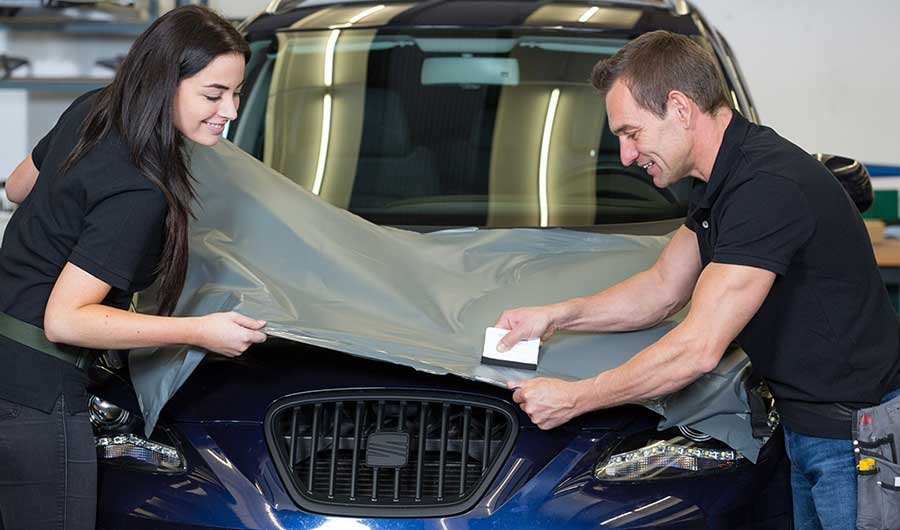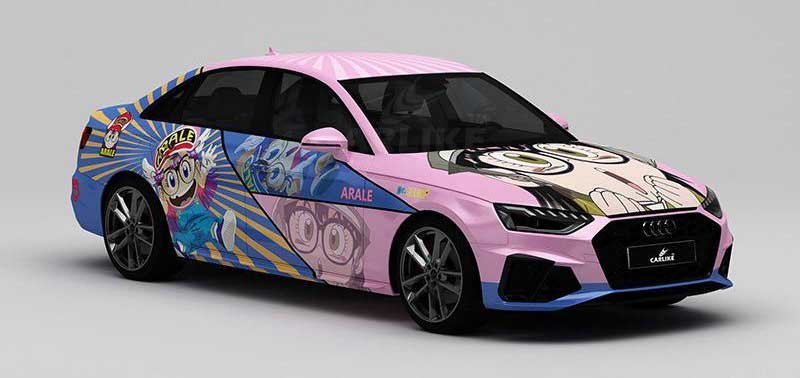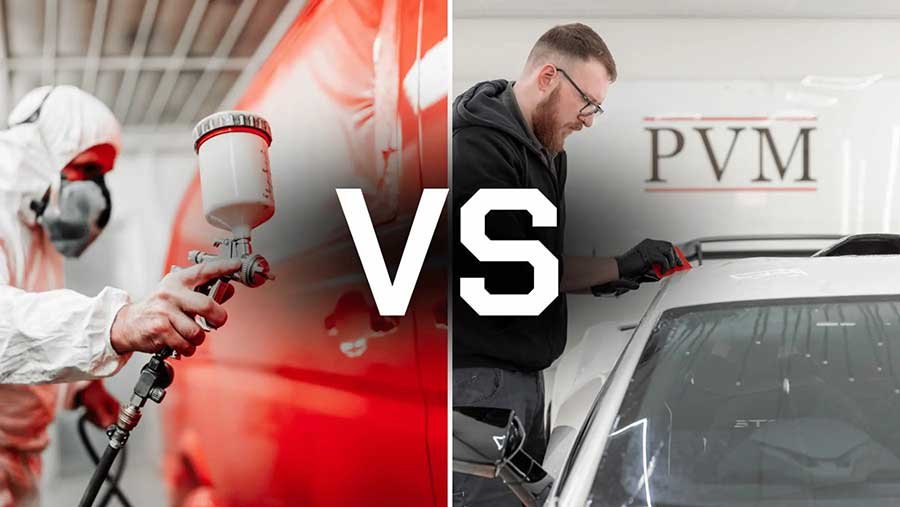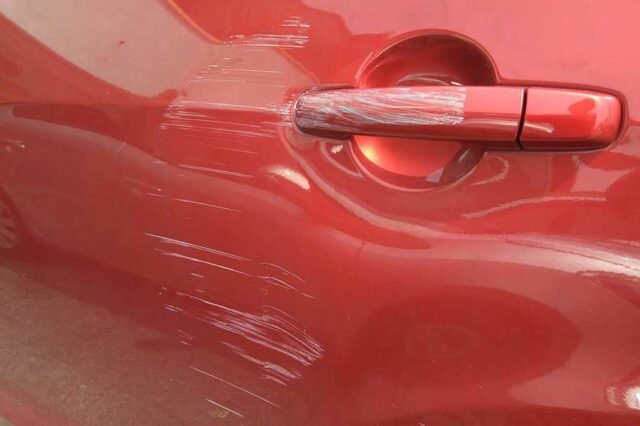Introduction: A Fresh Look for Your Vehicle
In the world of automotive customization, few decisions are as transformative—and as debated—as choosing between a vinyl wrap or custom paint job. Whether you’re looking to refresh an older vehicle, express your personality with a bold design, or protect your car’s exterior, the decision between vinyl wrap vs custom paint can shape not only the car’s appearance but also your maintenance routine, resale value, and budget.
This article breaks down everything you need to know about vinyl wrap vs custom paint, helping you make an informed and smart choice for your next car makeover.
Aesthetic Differences: Paint vs. Wrap Finish
The first—and most obvious—difference between vinyl wrap or paint is visual appeal. A high-quality custom paint job can deliver a deep, rich finish with a seamless, factory-like appearance. It allows for subtle layering, complex color gradients, and professional clear coats that can shine brilliantly under any light.
Vinyl wraps, on the other hand, offer an incredible variety of finishes and effects that paint simply can’t replicate affordably. From matte, satin, and gloss to chrome, carbon fiber, color-shifting, and even textured finishes, wraps give you more creative control. Want your car to glow under UV light or reflect like a mirror? Vinyl can do that—often without the high cost of experimental paints.

For those who want a classic, luxurious, and enduring look, custom paint might win out. But if you’re aiming for eye-catching designs, temporary experiments, or unique effects, vinyl wraps take the lead.
Durability and Resistance: Which Lasts Longer?
When comparing vinyl wrap vs custom paint, longevity is a major concern—especially for daily drivers exposed to the elements.
A professionally done custom paint job, especially with high-end materials and multiple clear coats, can last 10–15 years or longer with proper maintenance. However, it’s vulnerable to UV fading, scratches, and environmental damage unless protected with wax or a ceramic coating.
Vinyl wraps typically last 5–7 years, depending on the material, installation quality, and exposure to weather. Premium wraps with UV protection and top-layer coatings can last longer, especially if the vehicle is stored indoors or kept out of direct sunlight. Wraps also protect the paint underneath from scratches, rock chips, and minor abrasions.

Paint outlasts vinyl in raw durability, but wraps offer protective benefits and are easier to repair in sections if damaged.
Cost Breakdown: What’s More Budget-Friendly?
One of the biggest factors in deciding between vinyl wrap vs custom paint is cost. Paint jobs vary widely in price depending on the quality, color choice, and whether you’re doing a basic respray or a full custom design.
Here’s a general price comparison:
| Service | Average Cost |
| Basic Paint Job | $1,000-$4,000 |
| High-End Custom Paint | $6,000-$15,000+ |
| Full Vinyl Wrap | $2,000-$5,000 |
| Premium or Custom Wraps | $5,000-$8,000 |
While a basic vinyl wrap may initially cost more than a cheap paint job, it often provides more design flexibility and protection for the price. Additionally, wraps do not require sanding, priming, or curing time, which can reduce labor costs.
If you’re on a tighter budget but still want an impressive result, vinyl wraps offer greater value in many cases.
Installation Time and Reversibility
Another major factor to consider in the vinyl wrap vs custom paint debate is how long your car will be out of commission—and how easy it is to reverse the modification.
Custom paint requires surface preparation, multiple coats, drying/curing time, and often several days (or even weeks) in the shop. It’s a commitment and a permanent one. If you change your mind or the design becomes dated, you’ll need to repaint again.

Vinyl wraps, on the other hand, can be completed in 2–5 days, depending on complexity. Most importantly, they’re removable. Want to go back to the original color or try a new look? The wrap can be taken off without damaging the paint underneath—as long as it was applied properly and removed within the lifespan of the material.
Wraps are the best choice if you want flexibility or may want to sell the car in its factory color later.
Customization Flexibility: Design Freedom
If your goal is to stand out or express yourself creatively, you’ll find no shortage of possibilities when comparing vinyl wrap vs custom paint.
Paint allows for true metallics, candy finishes, airbrushed artwork, and smooth color blends. However, creating detailed designs, logos, or gradients often requires the skills of a master artist and adds significantly to the price.

Vinyl wraps, in contrast, make it easy to apply complex graphics, patterns, and textures without breaking the bank. You can print anything—from digital camo and galaxy motifs to branded wraps and abstract designs—and apply it with precision. Wraps also allow for two-tone designs or partial wraps, such as roof and hood accents, at a fraction of the cost of painting.
If creativity and individuality are your top priorities, vinyl wraps offer nearly unlimited customization with less hassle.
Legal and Insurance Considerations
Before deciding between vinyl wrap or paint, it’s wise to consider the legal and insurance implications.
Registration and Color Declarations:
In many provinces and states, the registered color of your car must match its appearance. With a full color-change wrap, you may need to update your registration. Paint changes require the same.
Insurance Notification:
Whether wrapping or painting, inform your insurance provider. Some insurers treat wraps as aftermarket modifications and may need to adjust your coverage. Others may cover damage to the wrap or custom paint under specific policies.
Reflective or Chrome Wraps:
Some regions restrict or regulate ultra-reflective finishes (e.g., chrome or mirrored wraps), considering them distracting or unsafe.
Always check with local regulations and your insurer to avoid potential issues.
Which One Is Right for You?
The final decision in the vinyl wrap vs custom paint debate comes down to your goals, budget, and lifestyle.
Ask yourself:
✅ How long do I plan to keep the car?
If it’s a short-term vehicle or lease, go for a wrap.
✅ Do I want something bold and temporary?
Vinyl lets you change your style every few years.
✅ Am I restoring a classic or show car?
Custom paint is often the better, more timeless investment.
✅ Do I want to protect the original paint?
A wrap adds a protective barrier while still allowing style.
✅ Am I on a budget?
Wraps offer great aesthetics and design flexibility at a lower cost.
There’s no universally “better” option. It depends on what matters most to you—appearance, cost, durability, or reversibility.
Conclusion: Paint or Wrap? Make the Smart Choice
Whether you lean toward a vibrant vinyl wrap or a classic custom paint job, the decision ultimately depends on your personal needs and vision.
Vinyl wrap vs custom paint isn’t a battle of good versus bad—it’s a matter of fit.
If you’re after quick transformation, temporary flair, or intricate graphics, wraps give you the flexibility you crave. But if your dream is a deep, mirror-like finish that turns heads at every light, a custom paint job could be the crown jewel of your car’s personality.
Either way, both vinyl wrap or paint can turn your vehicle into something truly special. The key is understanding the pros and cons, aligning them with your goals, and choosing wisely.






